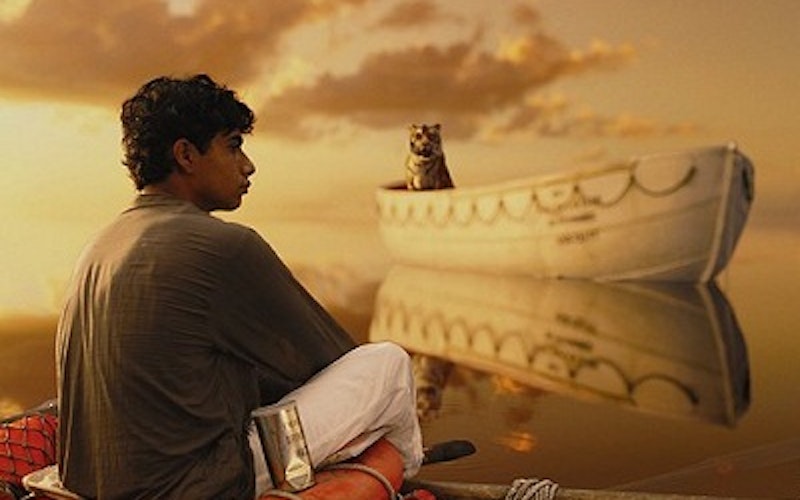
Music
Life of Pi and religion as figgy pudding
What would you expect from a movie that promises to make you “believe in God?” Maybe a little God?
That’s what a Canadian writer (Rafe Spall) has been told about the life story of Pi Patel – that it will make him believe in God. And so, at the beginning of Life of Pi, he seeks out the adult Patel (Irrfan Khan) and asks him to share this revelatory tale. It’s a whopper, for sure – about a boy who grew up in a zoo in India, collected world religions for a hobby and found himself stranded on a lifeboat with a tiger as a young man. But there’s nothing of substance about faith of any kind. Vague and blurry – like the woozy, computer-generated imagery that dominates its visual scheme – Life of Pi is one of those spiritually cozy movies that wants you to believe in little more than … belief.
The movie’s softness is challenged early on by one of its own characters. As the young Pi (Ayush Tandon) dabbles in Hinduism, Christianity and Islam, his irreligious father (Adil Hussain) looks on with disapproval, telling him, “Believing in everything at the same time is the same as not believing in anything at all.” The movie treats this sentiment as a symptom of unenlightened repression, but it’s a notion someone like G.K. Chesterton would likely have appreciated.
Still, Life of Pi deserves a chance to make its case for syncretism. And the central section seems set up to do just that. Now a teen (Suraj Sharma), Pi travels aboard a ship with his family and the zoo's animals, which they hope to sell in order to start a new life in Canada. When a storm capsizes the vessel, Pi finds himself stranded on a lifeboat with no other human survivors. Alone and adrift, Pi seems primed for soul-searching of the first order.
Life of Pi is one of those spiritually cozy movies that wants you to believe in little more than ... belief.
But that’s not what we get. Instead, director Ang Lee piles on the visual wonder. We get shots of the placid sea, in which the glassy water and rosy sky merge, and a psychedelic, underwater tour that seems modeled after nothing less than the creation sequence in The Tree of Life. It’s all a bit soft and gooey for my taste, like half-baked figgy pudding. We’re meant to be wowed by the beauty of (faux) nature and, in response, I guess, you know, believe.
There is a storm sequence in which Pi’s faith struggle becomes a bit more literal. As the winds rage and the rain pelts, Pi howls back at the sky, claiming he sees God. But we don’t. More importantly, we never learn what Pi means. The movie never tells us what it is that he believes. Such a story lacks even the conviction of syncretism, which takes a little of this and a little of that and at least adds up to something. Life of Pi gives us nothing while pretending to hold the universe in the palm of its hand.
Francis Schaeffer spoke of this sort of vagueness in a 1982 address to the General Assembly of the Presbyterian Church of America. Though discussing denominational - rather than faith - differences, he made this larger observation: “The spirit of our age is syncretism in all the areas of life, in all the areas of thought. The spirit of our age is syncretism, and thus accommodation is the rule. The spirit of our age is the age of syncretism in contrast in truth versus error; and this being so, accommodation is the common mentality.”
This lack of conviction is a recurring problem with faith films (not the Fireproof, but the Hollywood variety). Earlier this year, Prometheus threw out all sorts of faithy elements – even that old standby, a cross necklace - but ultimately used God as a MacGuffin. Such pictures can’t be pinned down because they don’t want to be. These movies don’t really care about faith; they just want us to feel that we've seen a story about "faith" in some vague way.
On those uninspired terms, Life of Pi succeeds.
Topics: Movies, Culture At Large, Arts & Leisure, Theology & The Church, Other Religions